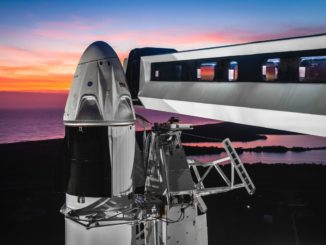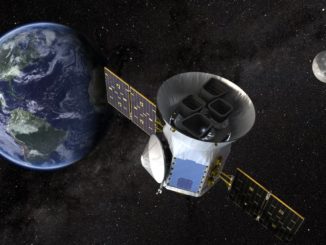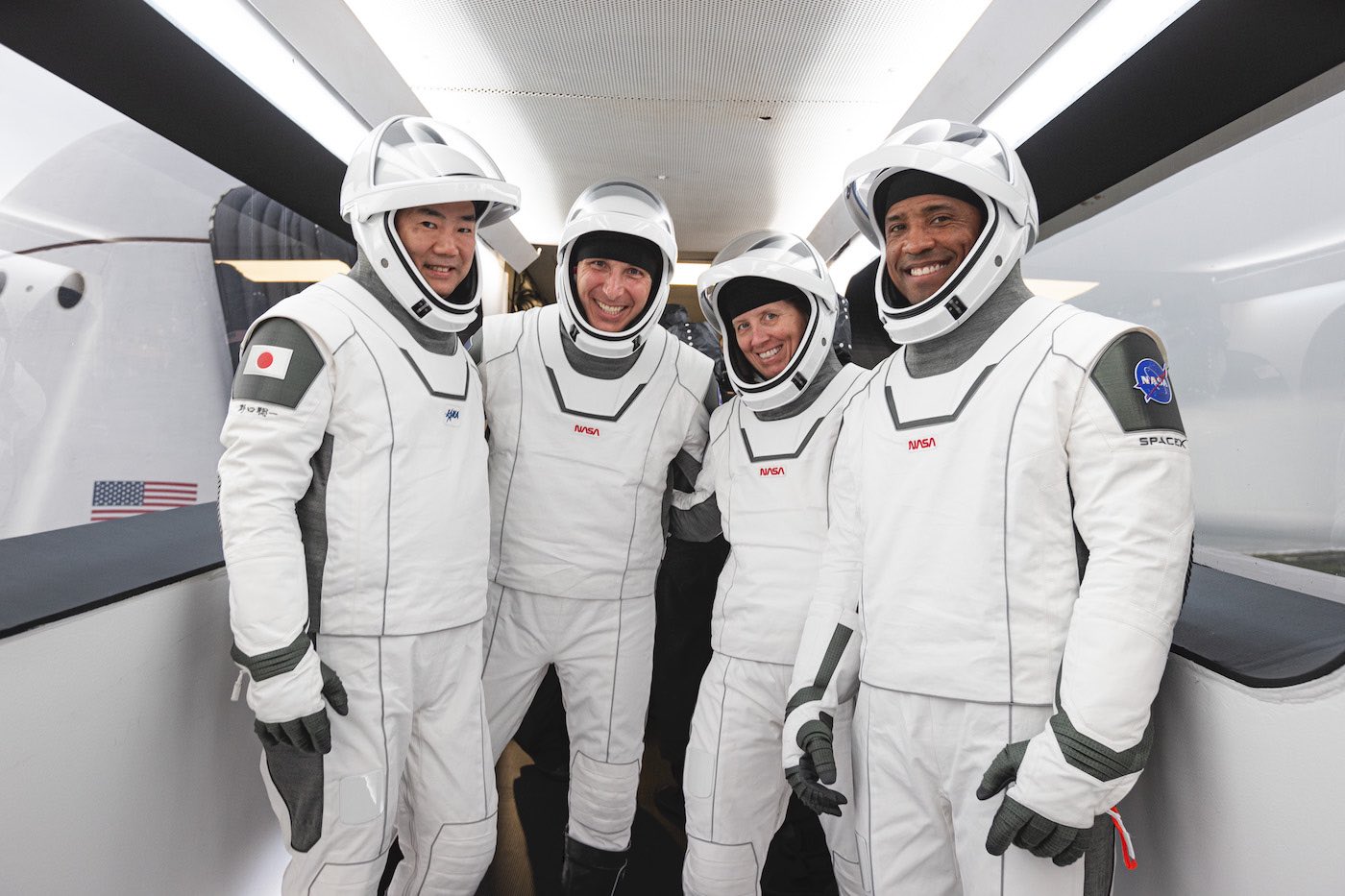
The four astronauts preparing to ride SpaceX’s Crew Dragon “Resilience” into orbit climbed aboard their spaceship Thursday at the Kennedy Space Center in a practice run for a launch to the International Space Station planned Saturday night.
Meanwhile, NASA and SpaceX managers kept track of weather and sea conditions downrange that might cause problems for recovery of the Falcon 9 rocket’s reusable first stage booster or the Crew Dragon itself in the event of an in-flight emergency.
NASA commander Mike Hopkins, pilot Victor Glover, mission specialist Shannon Walker, and Japanese astronaut Soichi Noguchi put on their black and white flight suits Thursday and rode inside Tesla SUVs from their crew quarters to the Falcon 9’s seaside launch complex.
They rode an elevator up the launch tower, walked across the crew access arm, and entered their Crew Dragon spacecraft on top of the 215-foot-tall (63-meter) Falcon 9 launcher. A couple of hours later, the astronauts exited the capsule and returned to crew quarters inside the Neil Armstrong Operations and Checkout Building at Kennedy.
Engineers continued evaluating data from a test-firing of the Falcon 9 rocket Wednesday ahead of a Launch Readiness Review on Friday, during which SpaceX and NASA officials will decide whether to proceed with a launch attempt Saturday at 7:49 p.m. EST (0049 GMT Sunday).
Kathy Lueders, associate administrator of NASA’s human exploration and operations mission directorate, said Thursday that there were no significant technical issues under discussion leading up to the Launch Readiness Review.
“We are obviously looking at the weather,” Lueders said in an interview with Spaceflight Now. “Weather is a big deal, weather for multiple areas.”
Tropical Storm Eta moved across the northern Florida peninsula Thursday, and was forecast to head northeast into the Atlantic Ocean. By Saturday, the remnants of the cyclone are predicted to be east of the Canadian Maritime provinces.
The Falcon 9 rocket will head northeast from Florida’s Space Coast to line up with the orbital track of the space station.
Mission managers will track winds, wave conditions, lightning, and precipitation at more than 50 locations in the Atlantic Ocean off the U.S. East Coast, east of Canada, and just west of Ireland. The Crew Dragon capsule could abort and splash down in those areas in the event of a launch failure, and rescue teams would be dispatched to recover the astronauts.
A weather forecast issued Thursday for the Falcon 9’s launch opportunity Saturday night shows a 70% probability of favorable conditions for liftoff at the Florida spaceport. The primary weather concern is with cumulus clouds, according to the U.S. Space Force’s 45th Weather Squadron.
The forecast does not take into account wind and wave conditions along the Crew Dragon spacecraft’s ascent corridor across the Atlantic, or upper level wind criteria for the Falcon 9’s climb through the atmosphere.
Lueders said SpaceX and NASA officials are also tracking the process of the football field-sized drone ship that will be used for landing of the Falcon 9’s first stage booster.
“The drone ship that we need for the first stage to land on is actually headed out today,” Lueders told Spaceflight Now. “And with the way the seas are, and the way Eta is, we’re watching how quickly that drone ship can make it out … So we’ll also talk about that tomorrow in our Launch Readiness Review, just where is it? Will it be able to be staged in time for us to be able to launch on Saturday?”
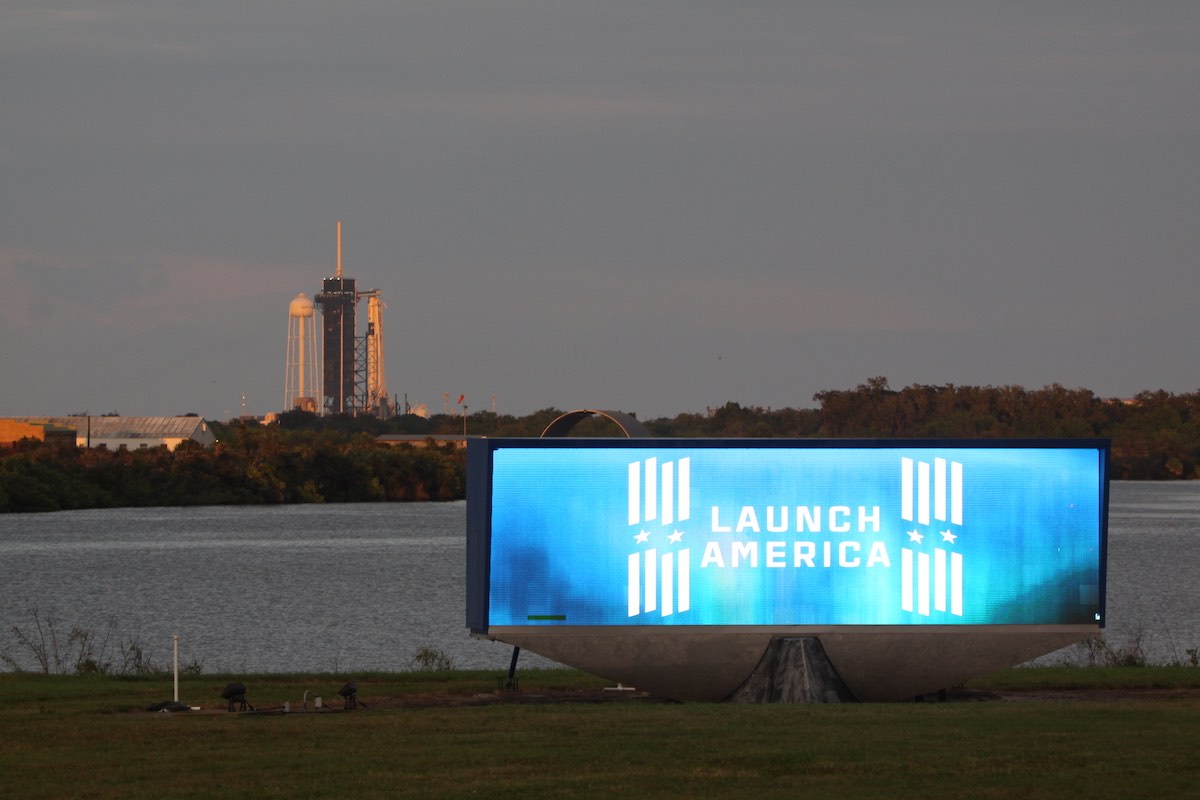
The launch Saturday night will kick off the Crew-1 mission, the first “operational” flight of astronauts on SpaceX’s Crew Dragon spacecraft. Hopkins and his crewmates will spend six months living and working on the International Space Station, before riding the Crew Dragon back to Earth for a parachute-assisted splashdown at sea.
The next Crew Dragon launch, tentatively targeted for March 30, 2021, with a fresh four-person space station crew, will use the same reusable Falcon 9 booster flying with the Crew-1 mission.
“Obviously, landing weather for the first stage is a big deal,” Lueders said. “This is the stage we’ll be using for Crew-2, so we care about it. Not that we don’t care about it ever, but this is an important stage.”
Lueders said NASA has a backup rocket available for the Crew-2 launch in case SpaceX is unable to land the Falcon 9 booster on the Crew-1 mission. If there is a problem with the recovery of the Crew-1 rocket, NASA is looking at launching the Crew-2 mission with the Falcon 9 booster slated to launch the Sentinel-6 Michael Freilich oceanography satellite later this month from California, Lueders said.
“We have a backup in case something happens to this particular stage, but we’ve done all our inspections on this stage,” Lueders said. “We’ve done all the work. We understand the hardware. So we would really like to use this because it makes the job for Crew-2 easier.
“One of the things we’re looking at is using the Sentinel-6 booster because it is a booster we’ve looked at, too,” Lueders said. “It will have had a flight on it. But … there are a couple of other ones out there. The nice thing with SpaceX is there is a range of hardware out there that we can use.”
SpaceX’s drone ship “Just Read the Instructions” left Port Canaveral Thursday, heading for a position a few hundred miles northeast of Cape Canaveral.
“The second place where we worry about the weather … is launch weather,” Lueders said Thursday. “Then we have to watch the weather up the abort track, so we’ll be looking at all those when we’re going through our Launch Readiness Review tomorrow, and then looking at whether we go for the first day, going down a path for targeting a Saturday evening launch, or whether we move to Sunday.”
A backup launch opportunity is available at 7:27 p.m. EST Sunday (0027 GMT Monday).
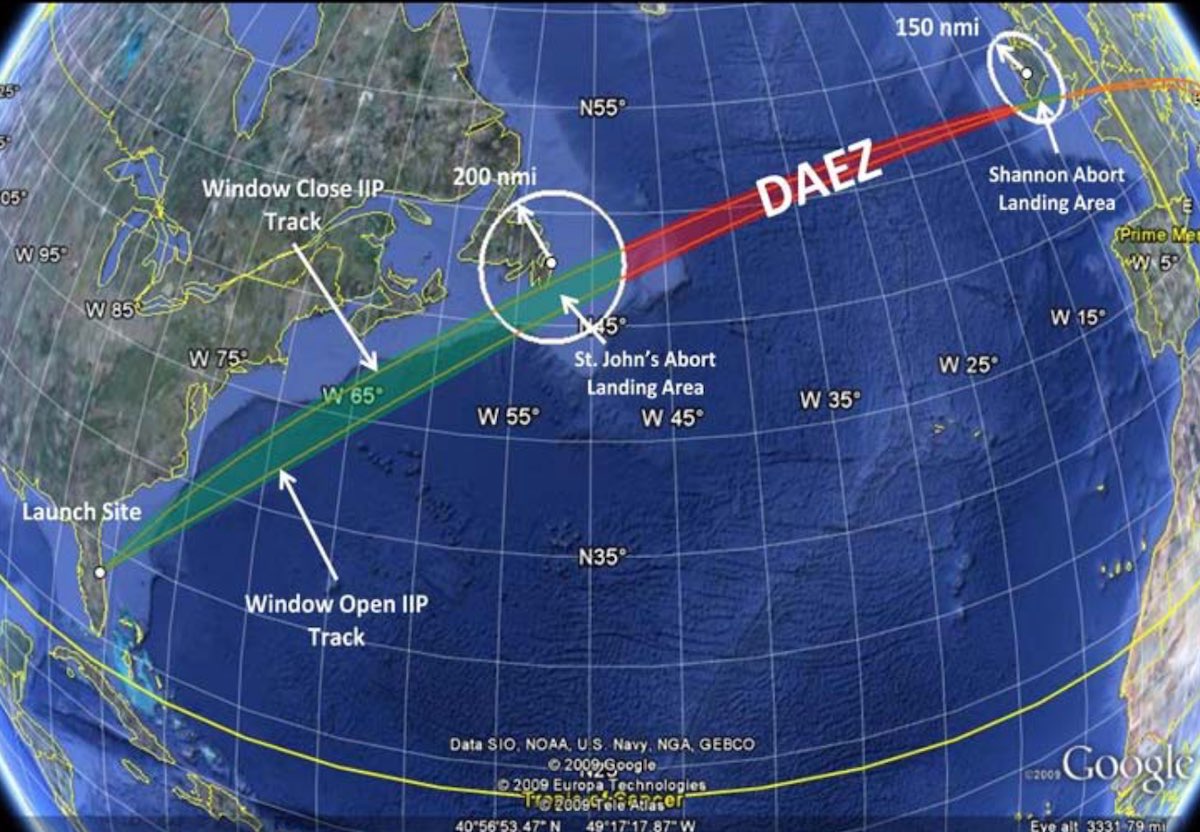
Once the launch occurs, the Crew Dragon will fly an automated rendezvous profile to link up with the space station, where Hopkins and his crewmates will join three other crew members currently living and working on the space station.
NASA officials formally certified SpaceX to fly astronauts during a two-day Flight Readiness Review on Monday and Tuesday, capping a decade-long effort to design, develop, and test the Crew Dragon spacecraft, human-rate Falcon 9 rocket, and validate SpaceX’s ground systems.
The test program was capped by the test flight of a Crew Dragon capsule earlier this year with NASA astronauts Doug Hurley and Bob Behnken on-board.
SpaceX test-fired the Falcon 9 rocket Wednesday afternoon on pad 39A, a day later than originally planned. SpaceX lowered the rocket at pad 39A to replace components on the second stage’s purge system.
Lueders said NASA and SpaceX pushed back the Launch Readiness Review a day after the delay in the Falcon 9 test-firing.
“So with that move from Tuesday to Wednesday, then we decided to move the LRR to Friday to make sure that the team still had a couple of days to go and comb through the data and make sure we’re ready to go,” Lueders said.
Email the author.
Follow Stephen Clark on Twitter: @StephenClark1.


